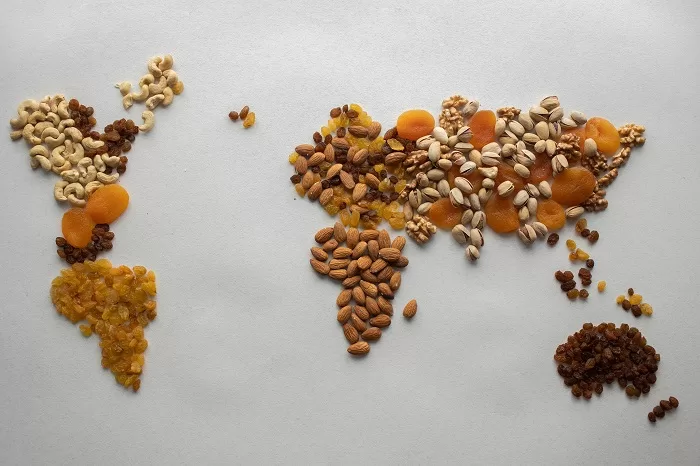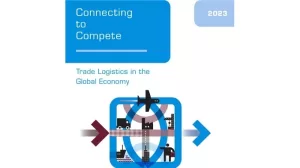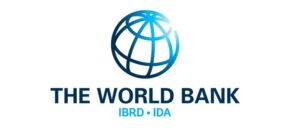World Bank Response to Rising Food Insecurity

Domestic food price inflation remains high around the world. Information from the latest month between December 2022 and March 2023 for which food price inflation data are available shows high inflation in almost all low- and middle-income countries, with inflation levels above 5% in 82.4% of low-income countries, 93% of lower-middle-income countries, and 89.0% of upper-middle-income countries and many experiencing double-digit inflation. In addition, about 87.7% of high-income countries are experiencing high food price inflation. The countries affected most are in Africa, North America, Latin America, South Asia, Europe, and Central Asia.
The agricultural and cereal price indices each closed 2% higher and the export price index 3% higher than two weeks ago. The prices of all three cereals increased, with maize, wheat, and rice prices closing 3%, 2%, and 1% higher, respectively, than two weeks ago. On a year-on-year basis, maize and wheat prices are 15% and 37% lower, respectively, and rice prices are 16% higher. Maize and wheat prices are 26% and 7% higher, respectively, than in January 2021, and rice prices are 5% lower. (See “pink sheet” data for agricultural commodity and food commodity prices indices, updated monthly.)
The April 2023 edition of the Agricultural Market Information System (AMIS) Market Monitor highlights the gradual decline over the past 10 months of global grain and oilseed prices to levels prior to the war in Ukraine. With the renewal of the Black Sea Grain Initiative on March 18, 2023, there is hope for continued recovery from the food price shocks of the past year. The report suggests that further measures must be taken to ensure that net food importing developing countries receive sufficient supplies in food at affordable prices. Despite the renewal of the Black Sea Grain Initiative for an additional 60 days, many bottlenecks are hindering the full potential of the deal, including a slowdown of ship inspections and high insurance costs. Due to the importance of the deal for Ukraine, Russia, and the rest of the world, these issues need to be addressed to facilitate trade flows through the Black Sea.
The U.S. Department of Agriculture forecasts that Ukraine will produce about 75 million tons of wheat, barley, corn, sunflower seeds, rapeseeds, and soya in the 2022/23 season—31% below 2021/22. To compound the decrease in production, excessive precipitation in the autumn and lack of liquidity have delayed the 2022/23 harvest in Ukraine.
The International Food Policy Research Institute examined the link between global wheat stocks and price volatility and how tightness in stocks over the past 18 months has exacerbated volatility and limited prospects for global food security. High wheat prices and price volatility resulting from the war in Ukraine have fallen to pre-war levels over the past 6 months, but wheat price volatility remains higher than historical levels, indicating continuing uncertainty in wheat markets.
Following Russia’s invasion of Ukraine, trade-related policies imposed by countries have surged. The global food crisis has been partially made worse by the growing number of food trade restrictions put in place by countries with a goal of increasing domestic supply and reducing prices. As of March 13, 2023, 23 countries have implemented 29 food export bans, and ten have implemented 14 export-limiting measures.
According to the Global Report on Food Crisis 2022 Mid-year Update, up to 205 million people are expected to face acute food insecurity and to be in need of urgent assistance in 45 countries.
World Bank Action
As part of a comprehensive, global response to the food security crisis, in April 2022 the World Bank announced that it is making up to $30 billion available over a period of 15 months, including $12 billion in new projects. The financing is to scale up short- and long-term responses along four themes to boost food and nutrition security, reduce risks, and strengthen food systems: (i) support producers and consumers, (ii) facilitate increased trade in food and trade inputs, (iii) support vulnerable households, and (iv) invest in sustainable food and nutrition security.
The Bank has achieved its target of making $30 billion commitment for food and nutrition security response. Between April to December 2022, the Bank’s food and nutrition security commitments in new lending have passed the $12 billion mark – with almost half for Africa, which is one of the hardest hit regions by the food crisis. Some examples include:
- The $766 million West Africa Food Systems Resilience Program is working to increase preparedness against food insecurity and improve the resilience of food systems in West Africa. The program is increasing digital advisory services for agriculture and food crisis prevention and management, boosting adaption capacity of agriculture system actors, and investing in regional food market integration and trade to increase food security. An additional $345 million is currently under preparation for Senegal, Sierra Leone and Togo.
- A $150 million grant for the second phase of the Yemen Food Security Response and Resilience Project, which will help address food insecurity, strengthen resilience and protect livelihoods.
- $50 million grant of additional financing for Tajikistan to mitigate food and nutrition insecurity impacts on households and enhance the overall resilience of the agriculture sector.
- A $125 million project in Jordan aims to strengthen the development the agriculture sector by enhancing its climate resilience, increasing competitiveness and inclusion, and ensuring medium- to long-term food security.
- A $300 million project in Bolivia that will contribute to increasing food security, market access and the adoption of climate-smart agricultural practices.
- A $315 million loan to support Chad, Ghana and Sierra Leone to increase their preparedness against food insecurity and to improve the resilience of their food systems.
- A $500 million Emergency Food Security and Resilience Support Project to bolster Egypt’s efforts to ensure that poor and vulnerable households have uninterrupted access to bread, help strengthen the country’s resilience to food crises, and support to reforms that will help improve nutritional outcomes.
- A $130 million loan for Tunisia, seeking to lessen the impact of the Ukraine war by financing vital soft wheat imports and providing emergency support to cover barley imports for dairy production and seeds for smallholder farmers for the upcoming planting season.
- The $2.3 billion Food Systems Resilience Program for Eastern and Southern Africa, helps countries in Eastern and Southern Africa increase the resilience of the region’s food systems and ability to tackle growing food insecurity. The program will enhance inter-agency food crisis response also boost medium- and long-term efforts for resilient agricultural production, sustainable development of natural resources, expanded market access, and a greater focus on food systems resilience in policymaking.
In May, the World Bank Group and the G7 Presidency co-convened the Global Alliance for Food Security, which aims to catalyze an immediate and concerted response to the unfolding global hunger crisis. The Alliance has developed the publicly accessible Global Food and Nutrition Security Dashboard, which provides timely information for global and local decision-makers to help improve coordination of the policy and financial response to the food crisis.
The heads of the FAO, IMF, World Bank Group, WFP, and WTO released a Third Joint Statement on February 8, 2023. The statement calls to prevent a worsening of the food and nutrition security crisis, further urgent actions are required to (i) rescue hunger hotspots, (ii) facilitate trade, improve the functioning of markets, and enhance the role of the private sector, and (iii) reform and repurpose harmful subsidies with careful targeting and efficiency. Countries should balance short-term urgent interventions with longer-term resilience efforts as they respond to the crisis.
Source: World Bank Group













